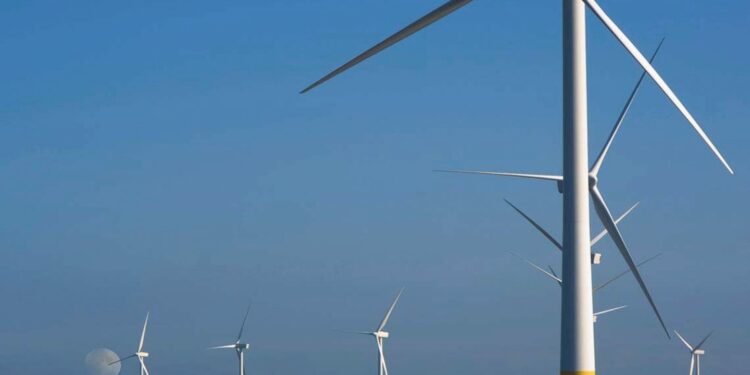The 3.7GW of offshore wind capacity procured in Allocation Round 6 (AR6) falls short of what the country needs to reach its net zero goals, according to trade body Offshore Energies UK (OEUK).
Speaking to Energy Voice, OEUK renewable manager Thibaut Cheret warned that the UK still has a considerable shortfall to make up to reach net zero by 2030.
According to a report commissioned by the trade body, the UK needs 80GW of renewables in the next six years, which involves trebling offshore wind capacity to 51GW.
This means that the next four allocation rounds, from AR6 to AR9, would need to double the amount of capacity awarded contracts for difference (CfDs) from an average of 2.3GW in previous rounds to about 5.9GW.
Cheret said this means that AR6 saw a 2.2GW shortfall compared to the 3.7GW of offshore wind contracted.
The total capacity awards saw 3.3GW coming from fresh fixed-bottom offshore wind capacity from two projects – the 2.4GW Hornsea Four wind farm, and the 963MW East Anglia Two.
Another 400MW came from floating wind through the Green Volt project.
In addition, more than 1.5GW of capacity was secured from projects that had won contracts in AR4 and rebid for higher prices.
The round was a marked improvement over the previous AR5 for offshore wind, which saw no projects bid into the round.
The UK government ramped up the budget to £1.5 billion – seven times that of AR5 – with an extra £300 million being added to the offshore wind pot.
Despite this, AR6 means the capacity shortfall facing the UK has widened.
“It has to go fast,” Cheret said. “If you want net zero 2030, you don’t have much time. You have to ramp up. AR6 was a good step, but it’s already falling short of what we need.”
Held back
Despite the pressing need to ramp up offshore wind, Cheret warned that current policies are jeopardising the pace at which offshore wind projects are being deployed, singling out the energy profits levy (EPL).
“There is this naïve belief that if you destroy oil and gas, renewables will grow,” he said. “But it doesn’t work like that – we will need oil and gas.
“There is very much a connection through the supply chain between the two activities,” he added. “It’s not an oil and gas supply chain and a renewable supply chain. They are the same supply chain.”
He said that the EPL risks destroying the UK energy supply chain, which will be needed to deliver future offshore wind farms.
“The big projects are coming,” he said. “If you lose the supply chain, you’re going to create a gap. And then it’s gone – the supply chain is not hanging around to be ready for wind.”
With the loss of a local supply chain, the UK would have to rely on imports and outsourcing to meet its capacity additions, raising costs and creating delays as the UK is forced to compete with other markets.
This compounds other issues facing the energy supply chain. Companies have raised concerns that they struggle to raise financing as banks are loathe to lend to players exposed to oil and gas, even if the funding is designed to help them move into renewables.
Furthermore, removing oil and gas projects from the supply chain takes a chunk out of their revenue and shrinks their margins – which they will need to find in offshore wind projects.
“Without the other projects, you narrow what the companies can do,” Cheret explained. “They have to invest in equipment. So if they can’t do that, it creates a gap. And once the supply chain breaks, the capability and the capacity will be gone too.”
Stepping stone
With Flotation Energy and Vårgrønn’s Green Volt securing a contract in AR6, it demonstrates the symbiosis of oil and gas and renewables.
Coming from the Innovation and Targeted Oil and Gas (INTOG) leasing round, it will help electrify offshore platforms, providing them with clean energy. It also represents a potential investment of £3 billion.
The INTOG projects, “partly funded by oil and gas, partly funded by the CfD, will really kickstart floating wind at scale in the UK, putting it ahead of the rest of the pack,” Cheret said.
They offer a chance for the supply chain to get the skills to deliver floating wind projects, helping reduce the cost for future initiatives.
But the window to deliver the initial projects is closing.
“INTOG has a shelf life,” Cheret said. “It has to happen before 2030, otherwise there’s not enough money to pay for it.”
He said that keeping the EPL in place means the vital stepping-stone projects may not materialise.
“If the fiscal regime is too harsh, those projects will be gone,” he said.
“And floating is very interesting, because floating wind has a much better fit between the existing supply chain than anything else.”
Recommended for you




 © Supplied by OEUK
© Supplied by OEUK






